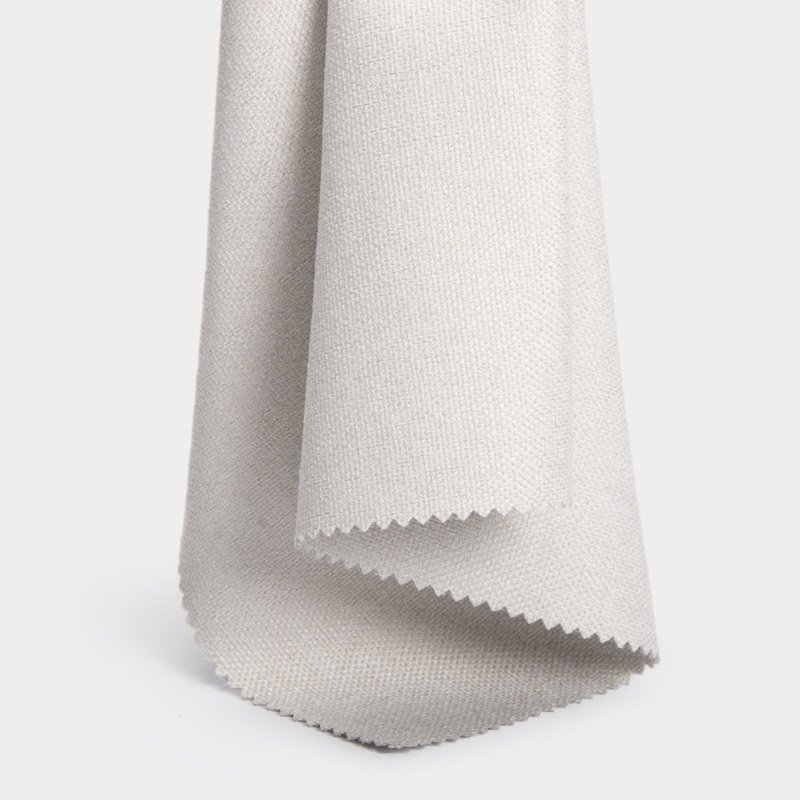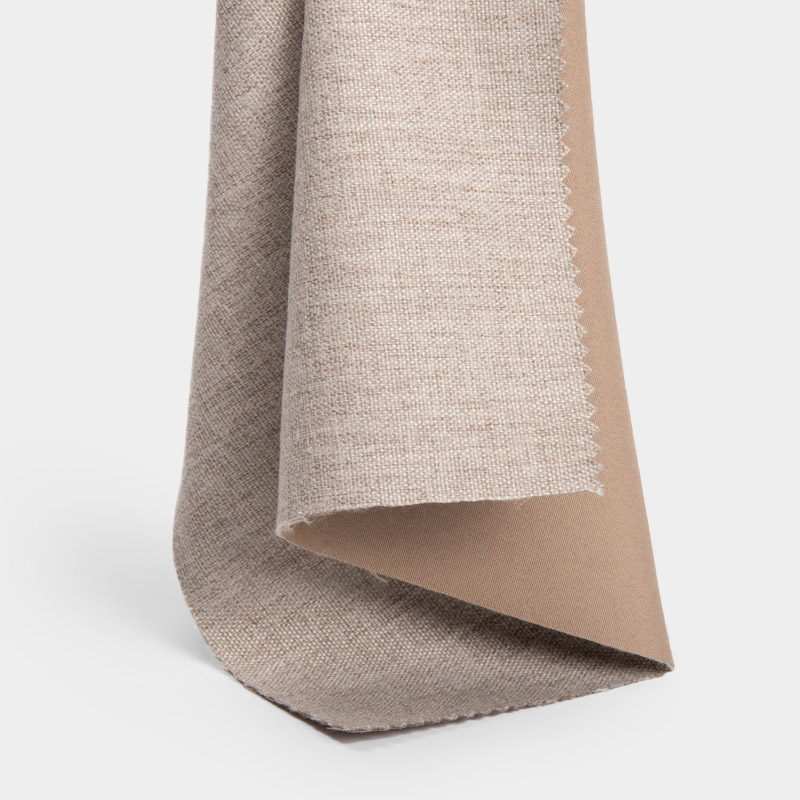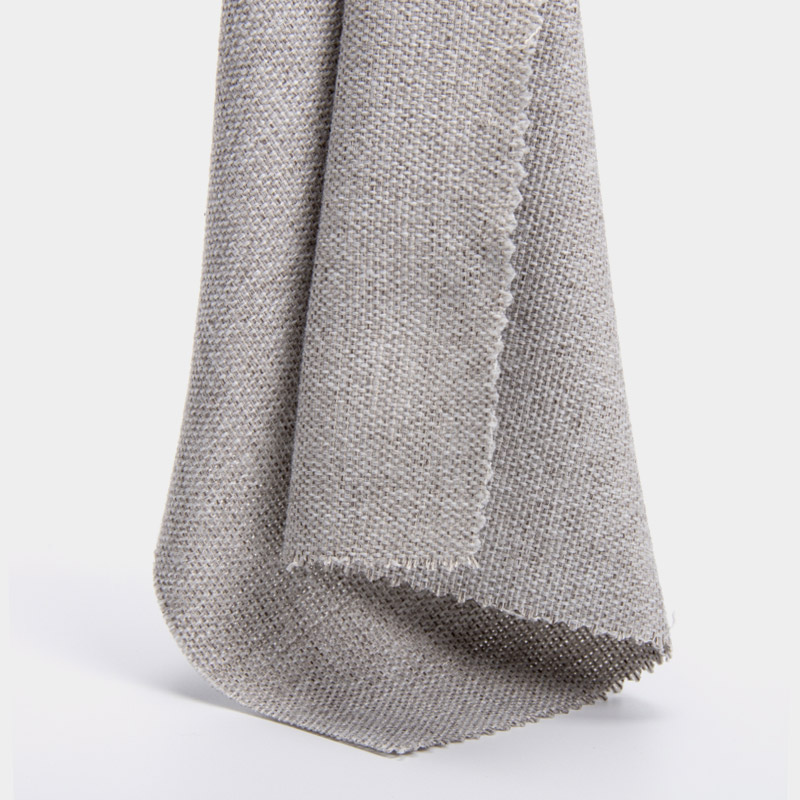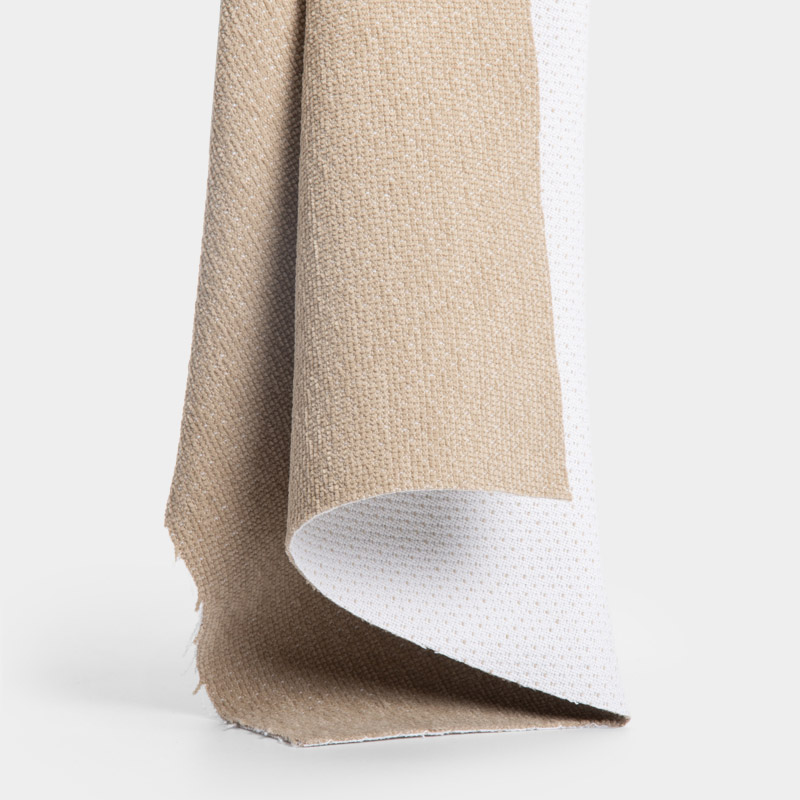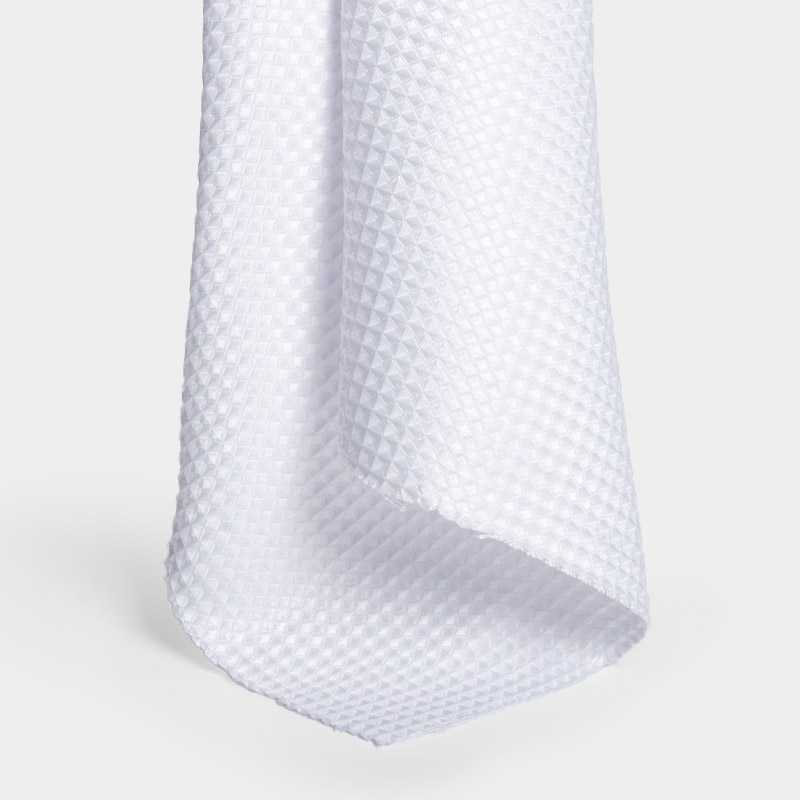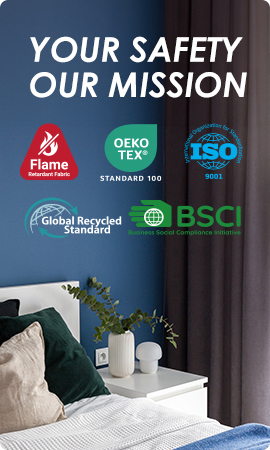Top 5 Flame Retardant Fabric Materials Analysis In 2025
-500x375.webp)
Reactive Flame Retardant Polyester
Key Technical Features
Reaction Between Flame Retardant and Polyester Fibers
Reactive flame retardant polyester is engineered to achieve permanent flame retardancy by integrating flame retardants directly into the molecular structure of polyester fibers during production. The reaction between the flame retardant agent and polyester fibers creates a durable bond, enhancing the fabric’s resistance to ignition and reducing the spread of flames.(Ruihong Qin, 2020, P171 )
Application Scenarios
High-End Clothing
The use of reactive flame retardant polyester in high-end clothing is driven by its ability to combine safety with comfort and aesthetics. Its permanent flame-retardant properties make it an excellent choice for protective garments used in industries such as metallurgy, chemical processing, and firefighting.
Stage Curtains
Stage curtains often require materials that meet stringent fire safety standards without compromising on visual appeal. Reactive flame retardant polyester is ideal for this application due to its ability to retain flame-retardant properties even after extended use and exposure to environmental factors.
Compliance Standards
B1 Standard
Reactive flame retardant polyester fabrics are designed to meet the B1 standard, which specifies strict criteria for fire resistance in textiles. These standards ensure that materials used in public spaces provide adequate protection against fire hazards.
French M1 Standard
In addition to meeting international standards like B1, reactive flame retardant polyester also complies with the French M1 standard. This certification is essential for products used in European markets, particularly in applications like stage curtains and interior decorations where fire safety is critical. Flame retardant fabric will comply with such safety standard to make sure the material is safe enough.
Eco-Friendly Inorganic Flame Retardant Cotton
Key Technical Features
Use of Aluminum Hydroxide and Ammonium Sulfate as Inorganic Flame Retardants
Eco-friendly inorganic flame retardant cotton employs aluminum hydroxide and ammonium sulfate as its primary agents. These compounds are non-toxic and decompose at high temperatures to release water vapor or inert gases, effectively suppressing flames.(Bekinew Kitaw Dejene, 2025, P5) This product does not contain halogens and meets ecological and environmental requirements. The incorporation of these inorganic substances into cotton fibers ensures sustainable production while maintaining high levels of safety.
Application Scenarios
Children’s Sleepwear
Children’s sleepwear must adhere to rigorous safety standards to protect against accidental fires. Eco-friendly inorganic flame retardant cotton is a preferred material due to its non-toxic nature and low smoke emission during combustion.
Infant Products
For infant products such as bedding or clothing, safety is paramount. The use of eco-friendly inorganic flame-retardant cotton ensures that these products are safe for babies while also being gentle on sensitive skin.
Advantages
Non-Toxic Properties
The absence of halogens in eco-friendly inorganic flame-retardants makes them safe for human contact and minimizes their environmental impact. This characteristic is especially important for applications involving children or infants.
Low Smoke Emission
In case of combustion, inorganic flame-retardants produce minimal smoke compared to traditional alternatives. This reduces visibility hazards during fires and lowers the risk of inhalation injuries.
Cost-Effectiveness
Despite their advanced properties, eco-friendly inorganic flame-retardants remain cost-effective due to their widespread availability and efficient manufacturing processes.
Organic Phosphorus-Based Flame Retardant Treated Fibers
Key Technical Features
Coating Process to Attach Organic Flame Retardants to Fiber Surfaces
Organic phosphorus-based flame retardants are applied using a specialized coating process that adheres the compounds securely onto fiber surfaces.(Ashraf Morsy, 2025,P377 ) This method enhances the material’s resistance to ignition while preserving its flexibility and durability. Flame-retardant fabrics treated with ATP have excellent washing resistance, good hand feel, non-toxic characteristics, and meet ecological requirements. The coating process ensures uniform coverage across all fibers, optimizing performance.
Application Scenarios
Automotive Interiors
Automotive interiors demand materials that can withstand high temperatures while ensuring passenger safety. Organic phosphorus-based treated fibers are commonly used in seat covers, headliners, and floor mats due to their reliable performance under extreme conditions.
Office Furniture Fabrics
Office furniture fabrics benefit from organic phosphorus-based treatments as they enhance both fire resistance and aesthetic appeal. These treated fibers are ideal for upholstery in workspaces where compliance with fire safety regulations is mandatory.
The advancements in these three types of flame-retardant fabric materials highlight their diverse applications across industries while ensuring compliance with safety standards.
Composite Flame Retardant Fabrics
Key Technical Features
Combination of Organic and Inorganic Flame Retardants with Multi-Layer Composite Structure
Composite flame retardant fabrics are designed by integrating both organic and inorganic flame retardants into a multi-layer composite structure. (Chonghua Ma, 2024, P9). This combination leverages the strengths of each type of retardant, creating a synergistic effect that enhances the overall flame resistance. The multi-layer design not only improves thermal insulation but also ensures durability and flexibility, making these fabrics suitable for demanding applications.
Application Scenarios
Firefighter Suits
Firefighter suits require materials that can withstand extreme temperatures while providing maximum safety. Composite flame retardant fabrics are ideal for this purpose due to their high heat resistance and ability to prevent the spread of fire. The multi-layer structure offers additional protection against heat exposure, ensuring the safety of firefighters in critical situations.
Aerospace Applications
In aerospace applications, materials must meet stringent fire safety standards while being lightweight and durable. Composite flame retardant fabrics fulfill these requirements by combining high-performance flame resistance with reduced weight. Their ability to withstand high temperatures makes them suitable for use in aircraft interiors and other aerospace components.
Advantages
High Comprehensive Performance
The integration of organic and inorganic elements in composite fabrics provides a balanced performance profile. These fabrics exhibit excellent resistance to ignition, reduced smoke emission during combustion, and enhanced durability under challenging conditions.
Heat Resistance and Smoke Prevention
Composite flame retardant fabrics are engineered to resist high temperatures effectively. Additionally, they minimize smoke production during combustion, addressing both visibility hazards and health risks associated with inhalation injuries.
Aramid Flame Retardant Fabrics
Key Technical Features
Use of Aramid Fibers for Enhanced Protection
Aramid fibers are known for their exceptional strength-to-weight ratio and inherent flame-resistant properties. These fibers are utilized in aramid flame retardant fabrics to provide superior protection against heat and flames. The molecular structure of aramid fibers allows them to maintain integrity at high temperatures without melting or dripping, making them an ideal choice for protective clothing.
Application Scenarios
Firefighter Protective Clothing
Aramid-based fabrics are extensively used in firefighter protective clothing due to their ability to withstand intense heat while offering flexibility and comfort. The inherent flame resistance of aramid fibers ensures long-lasting protection even after repeated exposure to extreme conditions.
Military Equipment
In military applications, aramid flame retardant fabrics are used in gear such as uniforms, body armor, and tactical equipment. Their lightweight nature combined with high thermal resistance makes them suitable for enhancing the safety and mobility of military personnel.
| Material | Key Technical Features | Application Scenarios | Advantages | Compliance Standards |
| Reactive Flame Retardant Polyester | Flame retardants bonded to polyester fibers for permanent resistance. | High-end clothing, stage curtains | Durable, aesthetic, flame-resistant | B1 Standard, French M1 Standard |
| Eco-Friendly Inorganic Flame Retardant Cotton | Aluminum hydroxide, ammonium sulfate suppress flames. | Children’s sleepwear, infant products | Non-toxic, low smoke, cost-effective | Not specified |
| Organic Phosphorus-Based Flame Retardant Treated Fibers | Phosphorus coating on fibers for ignition resistance | Automotive interiors, office furniture | Wash-resistant, non-toxic, flexible | Not specified |
| Composite Flame Retardant Fabrics | Organic/inorganic retardants in multi-layer structure | Firefighter suits, aerospace | High heat resistance, low smoke, durable | Not specified |
| Aramid Flame Retardant Fabrics | Aramid fibers with inherent flame resistance | Firefighter clothing, military equipment | Strong, heat-resistant, no melting | Not specified |
BEGOODTEX’s 2025 Solutions
-500x500.webp)
Customizable Flame Retardant Polyester Fabric Services by BEGOODTEX
BEGOODTEX offers customizable services for producing flame retardant Polyester fabric tailored to specific requirements. By utilizing advanced Polyester technologies, BEGOODTEX ensures that the aesthetic appeal of the fabric is not compromised while maintaining its fire-resistant properties. This customization allows clients to choose designs that align with their branding or functional needs without sacrificing safety standards.
Polyester Fabric Offered by BEGOODTEX
Flame Resistance
BEGOODTEX’s flame retardant polyester prioritize robust flame resistance by incorporating advanced technologies that meet international safety standards. These materials ensure effective protection across various industries where fire hazards are prevalent.
Environmental Friendliness
Recognizing the importance of sustainability, BEGOODTEX provides environmentally friendly polyester that comply with ecological regulations. This product does not contain halogens and meets ecological and environmental requirements. These materials reduce environmental impact while delivering high-performance results.
Thermal Insulation
In addition to being flame-retardant, BEGOODTEX’s polyester materials offer excellent thermal insulation properties. This feature is particularly valuable in applications where temperature control is critical, such as industrial settings or protective gear.
Noise Reduction
Polyester fabric options from BEGOODTEX include noise-reduction capabilities alongside their fire-resistant features. These multi-functional materials address both safety concerns and acoustic challenges in environments like transportation or construction.
Energy Efficiency
BEGOODTEX emphasizes energy-efficient manufacturing processes to produce its range of flame-retardant polyester fabrics. By optimizing resource use during production, the company supports sustainable practices while delivering high-quality products tailored to diverse industrial needs.
FAQ
Q: Are flame-retardant fabrics safe for public spaces?
A: Yes, when certified to standards like NFPA 701, BS 5867, or EN 13501, they are safe for use in schools, theaters, hotels, and other public spaces. These certifications ensure reduced fire spread and compliance with safety regulations.
Q: Can flame-retardant fabrics be digitally printed?
A: Most flame-retardant fabrics, such as IFR polyester and FR-treated cotton blends, support digital printing (e.g., sublimation or direct-to-fabric). Fabrics like aramids may require specialized inks or pre-treatments for optimal print quality.
Q: How do I maintain flame-retardant fabrics?
A: IFR fabrics (e.g., polyester, modacrylic) can typically be washed at 140°F (60°C) with standard detergents, avoiding bleach or softeners. Treated fabrics may need specific care to preserve FR properties, and some require periodic re-treatment. Always follow manufacturer instructions.

